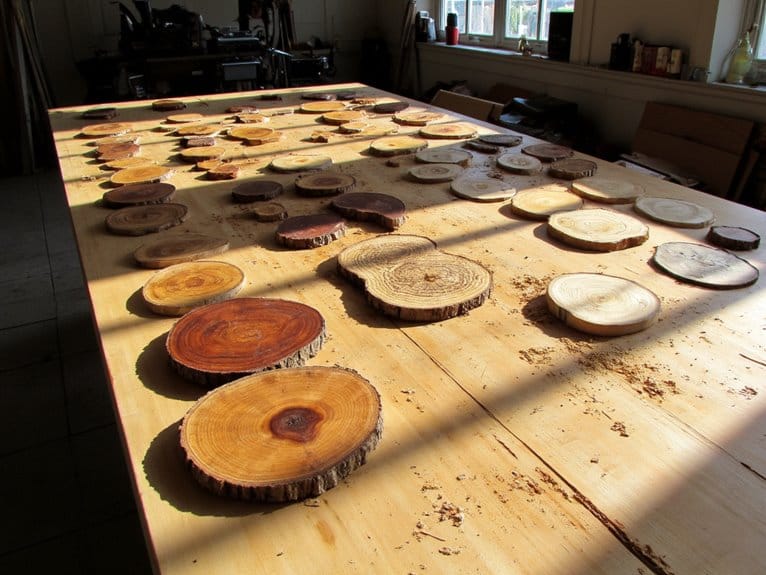What Is 4×4 in Music?
In music, 4×4 refers to a common time signature consisting of four quarter-note beats per measure, providing a fundamental rhythmic structure that underlies a vast array of musical genres and styles. This time signature's simplicity and versatility make it an ideal choice for composers and musicians seeking to create engaging and memorable melodies. From its roots in medieval music to its modern applications in rock, pop, and electronic genres, 4×4 has played a significant role in shaping the rhythmic landscape of Western music. Exploring the intricacies of 4×4 time reveals a wealth of creative possibilities waiting to be uncovered.
We are supported by our audience. When you purchase through links on our site, we may earn an affiliate commission, at no extra cost for you. Learn more.
The Basics of 4×4 Time
In music notation, a 4×4 time signature, also known as common time, consists of four quarter-note beats per measure, with the quarter note receiving one pulse or count. This time signature is widely used in various genres, including rock, pop, and country music. The 4×4 time signature provides a strong rhythmic foundation, allowing for a variety of rhythmic patterns and syncopation. Musicians can create complex rhythmic patterns by subdividing the quarter notes into eighth notes, sixteenth notes, or even smaller units. The 4×4 time signature's simplicity and versatility make it an ideal choice for composers and musicians seeking to create engaging and memorable melodies. Understanding the basics of 4×4 time is essential for reading and interpreting music notation, as well as for creating and performing music.
History of 4×4 in Music
The 4×4 time signature has its roots in medieval music, emerging as a dominant rhythmic pattern in the 13th century with the development of mensural notation. This rhythmic structure was shaped by cultural influences from the Renaissance period, where it was used in various forms of sacred music. Musical pioneers such as Guillaume de Machaut and Francesco Landini contributed to the evolution of 4×4 time, incorporating it into their compositions. As music progressed through the Baroque and Classical periods, 4×4 time became a staple in many musical genres. Its widespread adoption can be attributed to its versatility and ability to convey a sense of stability and balance. Throughout history, the 4×4 time signature has been a cornerstone of Western music, influencing the development of various musical styles and genres.
Genres That Use 4×4
From classical orchestral suites to contemporary electronic dance music, a diverse array of genres have employed the 4×4 time signature to create a sense of rhythmic cohesion and plummet. This ubiquitous rhythmic pattern has been utilized in various styles, including rock, pop, hip-hop, and R&B. Fusion genres, such as jazz-funk and electro-swing, also heavily rely on the 4×4 time signature, blending disparate styles to create a unique sonic landscape. In addition, electronic experimentation has led to the development of new subgenres, like techno and house, which often feature 4×4 rhythms as a fundamental element. The versatility of the 4×4 time signature has made it a staple in numerous musical genres, allowing artists to craft infectious, danceable grooves that enthrall audiences worldwide.
How 4×4 Works in Tracks
Beyond its prevalence across genres, the 4×4 time signature's functional role in individual tracks lies in its ability to establish a consistent pulse, providing a rhythmic framework for melodic and harmonic elements to unfold. This consistency is essential for creating a cohesive track structure, allowing producers to build tension and release through the repetition of bars. Here are three key ways 4×4 influences track composition:
- Bar repetition: The 4×4 time signature encourages the repetition of bars, creating a sense of familiarity and anticipation in the listener.
- Sectional division: The consistent pulse allows producers to divide tracks into clear sections, such as intro, build-up, and drop.
- Energy build-up: The repetition of bars enables producers to gradually increase energy and tension, culminating in a climactic moment.
Importance of 4×4 in DJing
Every DJ set relies on a seamless shift between tracks, and the 4×4 time signature's ubiquity guarantees that DJs can effortlessly mix and match songs from different genres and eras. This common rhythmic foundation enables DJs to employ various techniques, such as beatmatching, phasing, and segueing, to create a cohesive and engaging live performance. The 4×4 framework allows DJs to focus on other creative aspects, like song selection, effects, and crowd interaction, rather than worrying about complex rhythmic adjustments. As a result, DJs can deliver a polished and dynamic set that keeps the audience entranced. By leveraging the 4×4 time signature, DJs can refine their techniques and take their live performances to the next level, enabling a smooth metamorphosis from one song to another and fostering a continuous flow throughout the set.
Evolution of 4×4 Rhythms
Throughout the history of popular music, the 4×4 time signature has undergone significant transformations, with various genres and styles adapting and manipulating this rhythmic framework to create distinctive sounds and textures.
The evolution of 4×4 rhythms has led to:
- Polyrhythmic experimentation: Genres like jazz and fusion incorporated complex polyrhythms, layering multiple rhythms to create rich, intricate textures.
- Rhythmic innovation: Electronic dance music (EDM) and hip-hop producers pushed the boundaries of 4×4 rhythms, incorporating syncopation, accents, and unusual rhythmic patterns.
- Subgenre plunge: The 4×4 time signature has been adapted and modified to create unique styles within genres, such as techno, trance, and drum and bass.
This evolution has not only expanded the possibilities of 4×4 rhythms but has also influenced the development of new genres and subgenres, solidifying the 4×4 time signature as a cornerstone of popular music.






